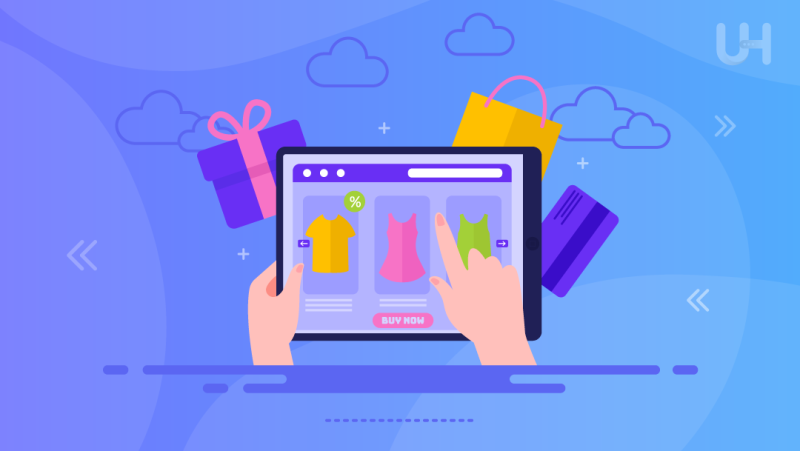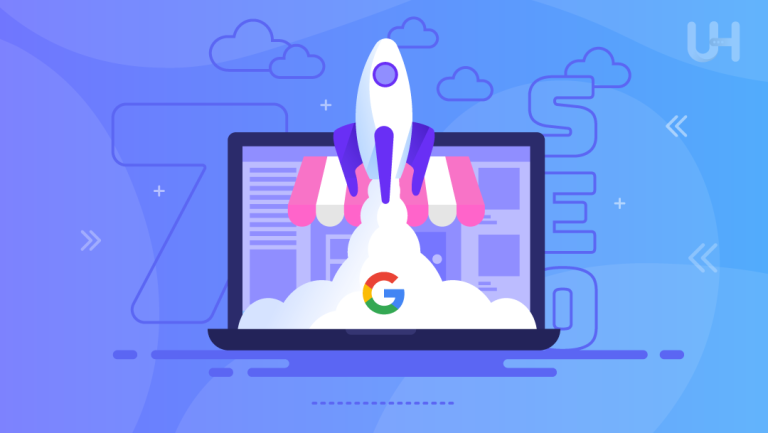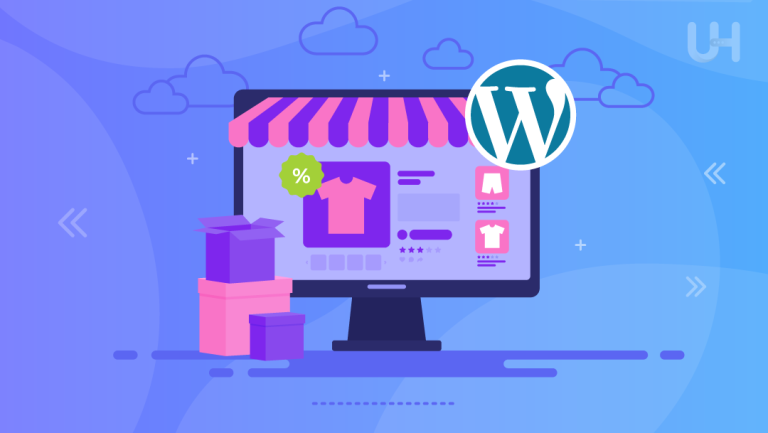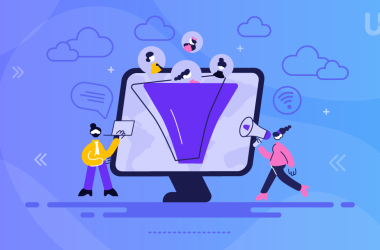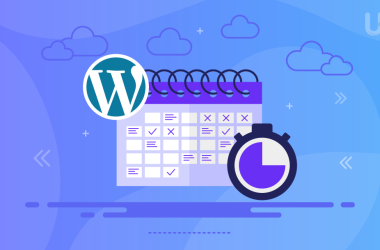If you’re struggling to connect with your customer base well or make an impact on them, you are in the right place. In this post, you will fully understand what eCommerce personalization is, what it entails, why you need it, and how you can get started applying the strategies.
By the end of this read, you will fully understand how to leverage eCommerce personalization to make the most out of your marketing spend.
What Is eCommerce Personalization?
eCommerce personalization is the process of tailoring your customers’ online shopping experiences so that they fit their unique preferences.
Here’s how it works:
When a customer visits your store, it will show them content, product recommendations, and special deals based on what they like, their shopping habits, and their demographics. For example, if you often buy sports apparel and accessories from an online sports shop, the website’s algorithm will highlight the latest sports equipment or offer discounts on running shoes.
The main goal of eCommerce personalization is to improve your customer’s shopping experiences. It aims to increase their chances of finding what they need, make them happier with their purchases, and keep them engaged with the online store so they’re more likely to shop again.
4 Core Benefits Of eCommerce Personalization
As you explore the benefits of eCommerce personalization, identify which strategies could improve your online shopping experience.
Gives Customers A Conversion-Driving Experience
Nearly 40% of consumers left a website because they were overwhelmed by too many choices. Personalizing makes customers feel understood and valued by giving them exactly what they want. It streamlines the customer’s shopping journey so they can find what they want in need quickly.
For example, a personalized homepage based on an individual’s dedicated IP address with the appropriate language, currency, and shipping options for their specific location helps directly address their needs. Geolocation APIs (Application Programming Interfaces) integrated into your website’s backend detect the user’s location and dynamically adjust the content and offerings in real-time.
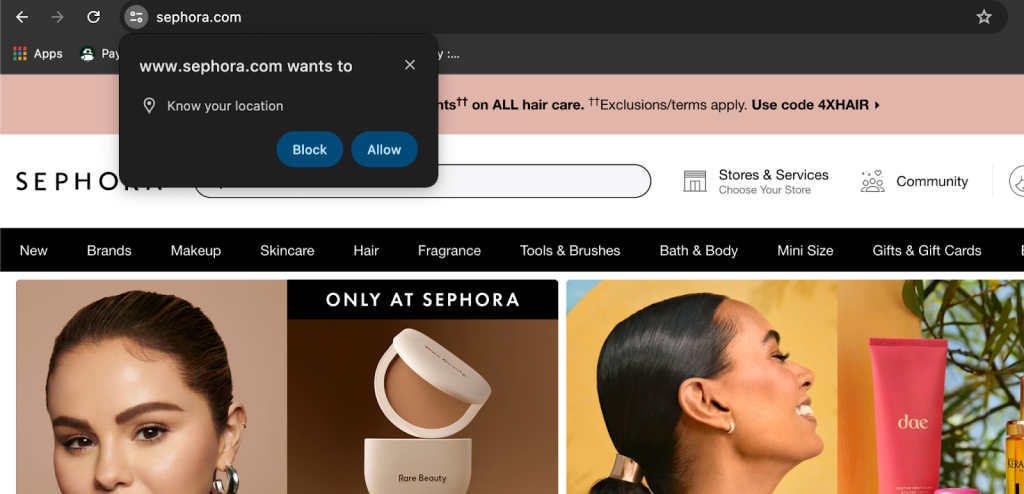
Online stores like Sephora ask to know your location to provide personalized content.
Boosts Conversion Rates
eCommerce personalization will lift revenues by 10-15%.
For customers who don’t know exactly what they are looking for, personalized product recommendations will strengthen purchase intent.
AI-driven recommendations and personalized content will help you present the most relevant options to each customer. This will help them decide faster and increase the chances of them buying.
Personalized emails with email hosting or ads that address customers by name and feature products they are interested in capture their attention and drive them to engage more. In turn, this increases the open and click-through rates by 29% and 41% respectively.
You can also set up automated cart reminders for inactive customers to complete their purchases if they leave items in the cart to help you win them back. Send discount offers to prompt customers to complete their purchase.
Schedule personal, time-bound offers to create urgency too.
Increases Customer Loyalty
Effective eCommerce personalization not only attracts customers but also retains them. A personalized eCommerce experience will increase customer retention by up to 30%.
Offer personalized discounts and special offers to loyal customers to make them feel appreciated and encourage repeat purchases.
For example, H&M offers a 25% birthday discount on one item, while Sephora offers special deals on products you frequently buy.
You can also offer loyalty programs and tiered discounts to incentivize repeat purchases and strengthen customer relationships. Andar is an excellent example of this. They provide loyal customers with personalized incentives they call Andar Rewards. You earn points for every purchase and redeem for discounts on future purchases.
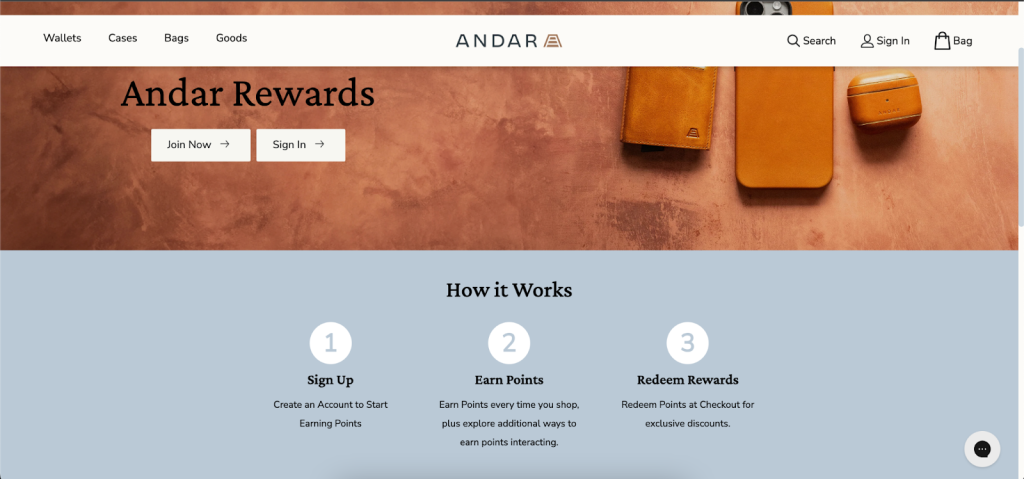
Provides A Better Understanding Of Your Customers
An effective eCommerce personalization strategy requires collecting and analyzing data on your customers’ preferences, behaviors, and purchasing history.
Use the Engagement, Acquisition, and Purchase Journey features in Google Analytics to monitor your customers’ browsing behavior, purchase history, and interactions with the brand.
Ask customers for personal details by having them sign up on your dedicated hosting website in exchange for discounts, exclusive content, or free trials. You can also ask them to complete surveys using emails or pop-up forms on your site.
Then, use this data to create detailed customer profiles and segments, personalize your website layout, and tailor your marketing and product offerings to meet their needs.
Here’s a great example: Select Software Reviews included a questionnaire form on its homepage that asks for your company size and HR requirements to understand your needs better and provide personalized recommendations when you land on the website’s content.
It then asks for your details like first name, last name, work email, and company name so they can share their newsletter. Lastly, it strategically asks for your phone number to offer a benefit–experts that will contact you and give personalized advice based on your responses.
4 Steps To Personalize Your eCommerce Platform
As you go through these steps, consider your customer base, their behavior, and what data you already have or need to collect. Use these to create more personalized shopping experiences.
Step 1: Collect Customer Data
Collect data that tells you how customers interact with your eCommerce site, what products they are interested in, and their purchasing habits. Here’s what you can do:
- Use Google Analytics to track and analyze customer behavior—page views, time spent on pages, products viewed, bounce rates, and conversion paths.
- Encourage customers to create accounts to collect names, email addresses, purchase histories, and preferences.
- Use SurveyMonkey or Typeform to create and distribute surveys to learn about customer satisfaction, product preferences, and service quality.
- Facebook and Instagram Insights help track the number and demographics of unique accounts you’ve reached, including top countries, genders, and age ranges. See which content your audience likes and how engaging and impressionable it is.
- Analyze data from past purchases and transactions to understand buying patterns and preferences. Transaction records reveal popular products, peak buying times, and average order values. Shopify has a Point of Sale app, downloadable via the Shopify app store to help track all transactions.
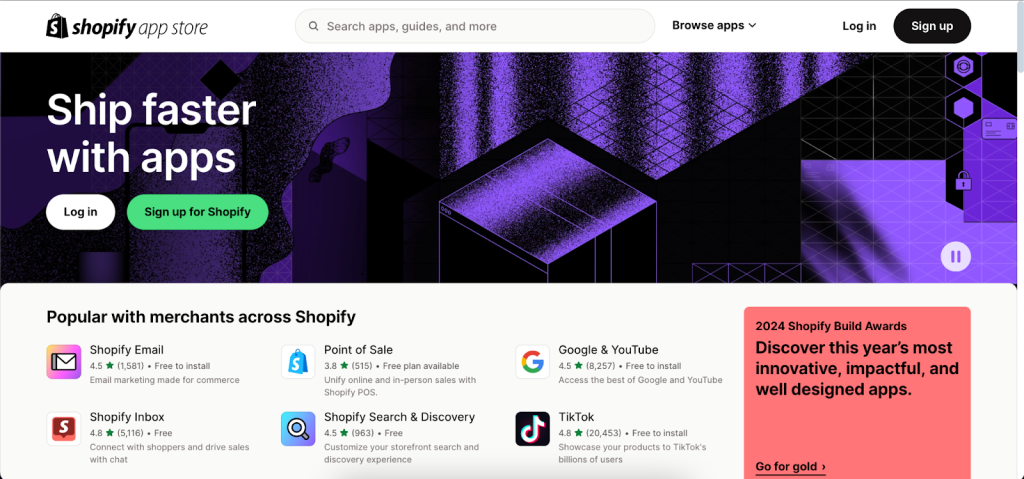
- Use cookies and tracking pixels to gather data on customer behavior across websites. They can track actions like items added to the cart, pages visited, and clicks on ads. Tools like Google Tag Manager help implement and manage these tracking technologies.
- Email marketing platforms like Mailchimp collect data on open rates, click-through rates, social activity, and email interactions. Use this information to segment audiences and personalize email content to match customer interests and behaviors.
Step 2: Create Customer Segments
Use the collected data to divide your customer base into segments or groups based on similar behavior, demographics, preferences, needs, and geographical location. This helps create targeted marketing campaigns and offer personalized product recommendations that resonate more with each group.
Here’s an excellent example to consider: Infraredi, a company specializing in red light therapy devices, segments its customers based on their specific body health goals and preferred treatment size and targets them with products that fit their needs.
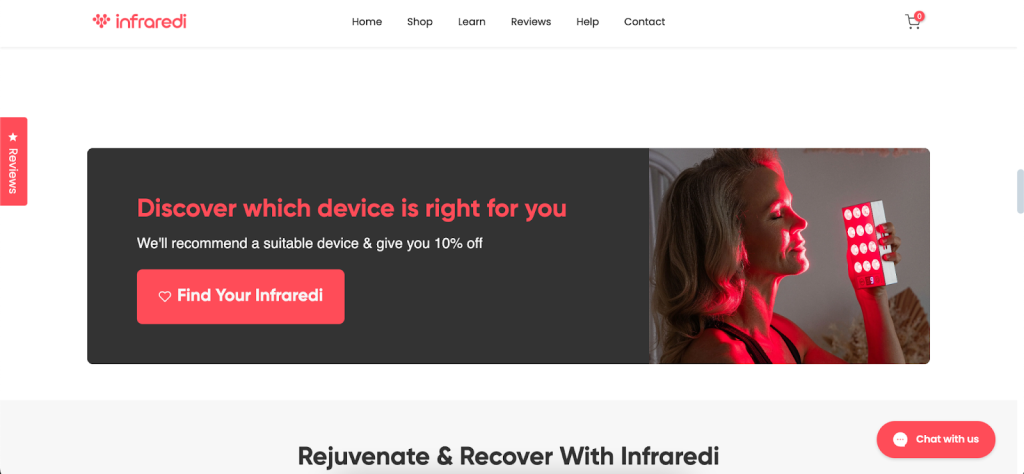
To offer a personalized shopping experience, they created a “Find your Infraredi” questionnaire that gives product recommendations based on your responses and a 10% discount off the first purchase.
Step 3: Find Personalization Opportunities
Consider these 3 basic questions before choosing any eCommerce personalization tactics:
Where can you personalize the shopping experience? Consider all customer touchpoints, like your eCommerce sites, email, social media, and mobile app.
For example, check the number of visitors, engagement rate, and conversion rate for your website and mobile app. If the numbers are significantly high, let’s say 1000 at a time, then your website and mobile app need to be personalized for an even better user experience.
If your bounce rate is high or customers leave items in the cart for too long, then use personalized email campaigns for follow-ups and promotions.
What can you personalize? Think product recommendations, dynamic pricing, promotions, messaging, and content. Give product recommendations and personalized content throughout the customer journey, from browsing to purchasing.
Use promotions, dynamic pricing, and personalized messages only at specific times to strategically drive engagement and conversions.
How can you personalize? Think algorithms, machine learning, and artificial intelligence tools to automate eCommerce personalization.
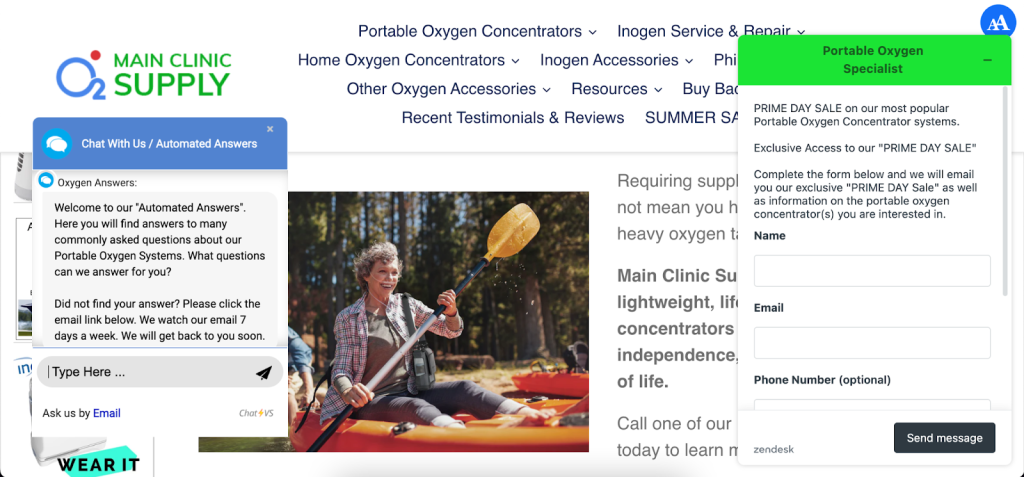
Here’s an example you can copy: Main Clinic Supply uses AI-powered chatbots to provide personalized customer support and product suggestions in real-time. The answers are automated and if you ask something that isn’t commonly asked, the bot returns with a “Contact us” button and encourages you to send an email with your query.
The website also features a “Help” form via Zendesk side-by-side with the AI chatbot for any questions or messages you may have.
Effective website personalization can significantly boost engagement and conversion rates. Tools like Flook enable businesses to create interactive onboarding tours, pop-ups, and banners that cater to user preferences, ensuring a smoother and more engaging customer journey.
Step 4: Implement eCommerce Personalization Tactics
There are 7 methods in this list, start implementing what’s easiest for your business.
Smart Product Suggestions
Use a recommendation engine like Reco Engine to make personalized product suggestions to high-value customers. Recommendation engines are AI-powered tools that recommend products to browse or purchase based on a customer’s browsing history and purchasing history.
For instance, if a customer frequently browses fitness equipment, the engine will suggest related products like workout gear or supplements.
Integrate Reco Engine with your eCommerce platform and sync your product catalog and customer data. Use features like collaborative filtering, which recommends products based on similar users’ preferences, and content-based filtering, which suggests items similar to those the customer has shown interest in.
Configure the engine to display personalized recommendations on key touch points like the homepage, product pages, and the checkout process.
Retarget
Re-engage those website visitors who interacted with your eCommerce stores in the past but have not made a purchase. Use social media ads or email reminders to keep your brand and products fresh in your customers’ minds and encourage them to return to complete their purchases.
For example, you can use targeted on-site popups to retarget customers with welcome-back offers, loyalty programs, first-time visitors discounts, and cart abandonment reminders to smoothen the customer journey.
Personalized Email Marketing
Use personalized email marketing to send tailored email messages to customers based on their preferences and behavior. Shopify Email will help you send automated branded emails to customer segments directly through the platform.
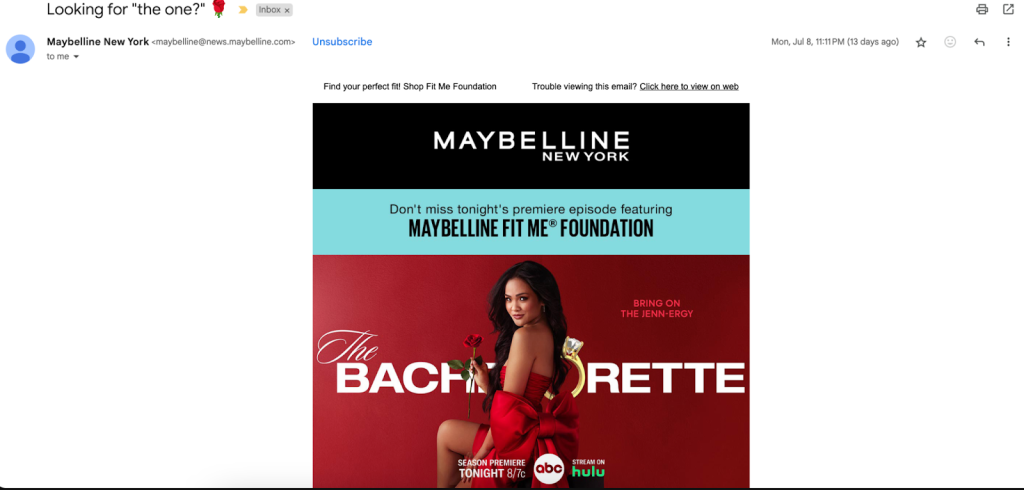
Popular eCommerce companies like Maybelline send emails with new product recommendations and makeup tips to help you make beauty decisions that suit your tastes.
ColourPop’s ‘Spin to Win’ popup offers tiered discounts to new site visitors in exchange for their email addresses so they can market to them.
Personalized Pricing
Adapt product prices according to specific customer data and market conditions.
Airlines use dynamic pricing strategies based on the traveler’s location, booking history, or demand level on specific routes.
For example, the same customer searching for tickets between New York and Miami will receive different price quotes based on the booking timing and the route’s popularity. This generates maximum revenue given individual circumstances.
Mobile Personalization
Adapt the user experience for mobile screens to optimize convenience and customer engagement.
Starbucks uses the location data through its mobile application, suggesting the nearest stores with personalized drink recommendations based on a customer’s order history. On-the-go customers can also use the app to place orders and make payments in advance so they can pick up their orders inside the store without inconvenience.
Product-Detail Page Recommendations
Suggest additional products to loyal customers based on what they are currently viewing. This tactic also helps upsell by inviting customers to buy more expensive similar products and add-ons.
Amazon is one of the best eCommerce personalization examples. They display “Customers who bought this item also bought” and “Frequently bought together” sections on product detail pages.
For instance, when viewing a camera, Amazon might recommend lenses, tripods, and memory cards, encouraging customers to purchase complementary products.
Another excellent example is this online nursery that uses product-detail page recommendations to suggest plants similar to the one the customer is already looking at.
For example, if you open the product details page for Golden Treat Urban columnar apple plant, you’ll find 5 recommendations of similar columnar apple plants under the section “You may also like” at the bottom of the page.
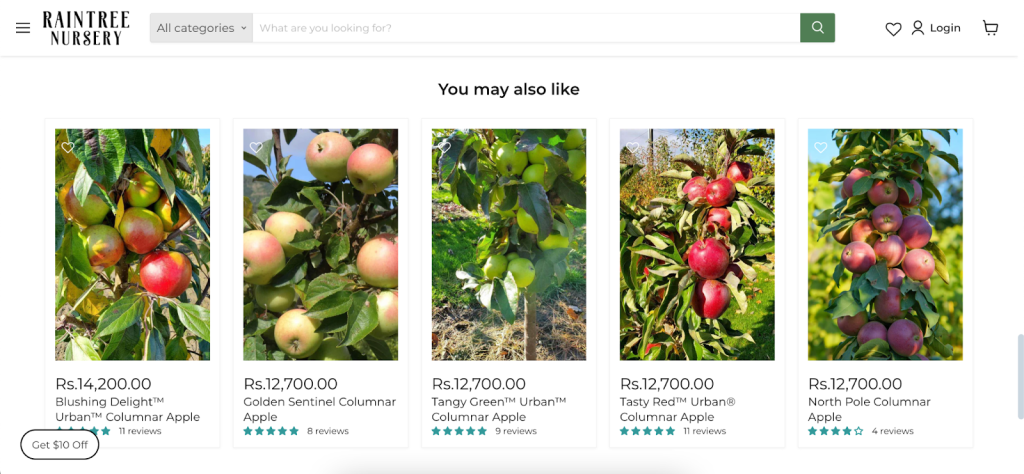
Notice how the recommendation for the highest-priced plant comes first before all others. This is how you should upsell higher-priced products.
User Generated Content
User-generated content (UGC) includes reviews, photos, videos, and other types of content customers create. In the US, 46% of consumers learn about an interesting product or service when recommended by a friend or family member.
The easiest way to include UGC is to showcase customer reviews, testimonials, and case studies on your site. For example, do what SlideBean does. When you click on the review, you’ll be redirected to a detailed case study titled “Slidebean helped Cloaked Wireless raise $425,000 in seed capital.” More than that they quantify their results so it’s easier to gauge how credible they are.
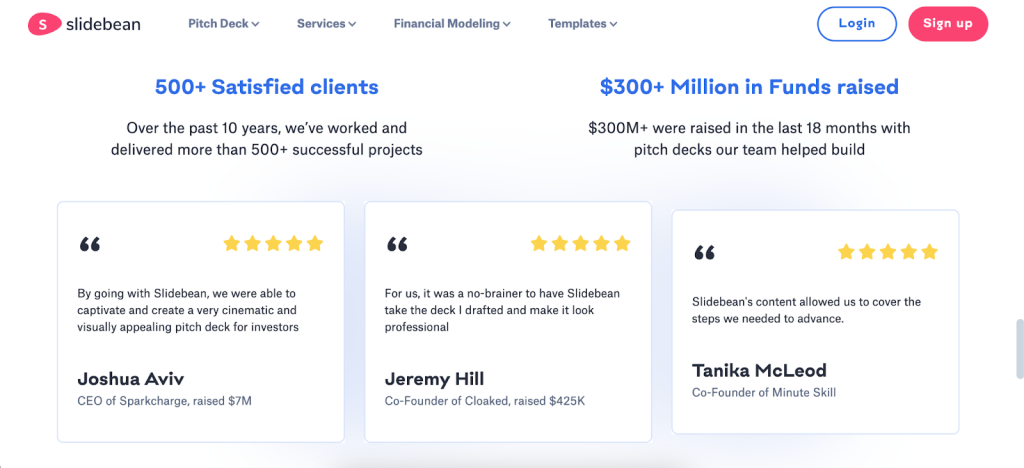
Timely Discounts
Provide special promotions or discounts at strategic moments to incentivize purchases to reduce cart abandonment and encourage continuous shopping and impulse buying.
For example, ASOS uses exit-intent popups to offer discounts when customers are about to leave the site without completing a purchase. This timely offer will be the push needed to finalize the transaction.
Uber Eats frequently offers discounts during peak meal times or slow periods to drive orders. For example, they send push notifications with discount codes for weekday lunch orders.
Recent Bestsellers
Highlight recent best-selling products to guide customers to popular and highly rated products. This strategy uses social proof to boost sales, as customers often trust the choices of others.
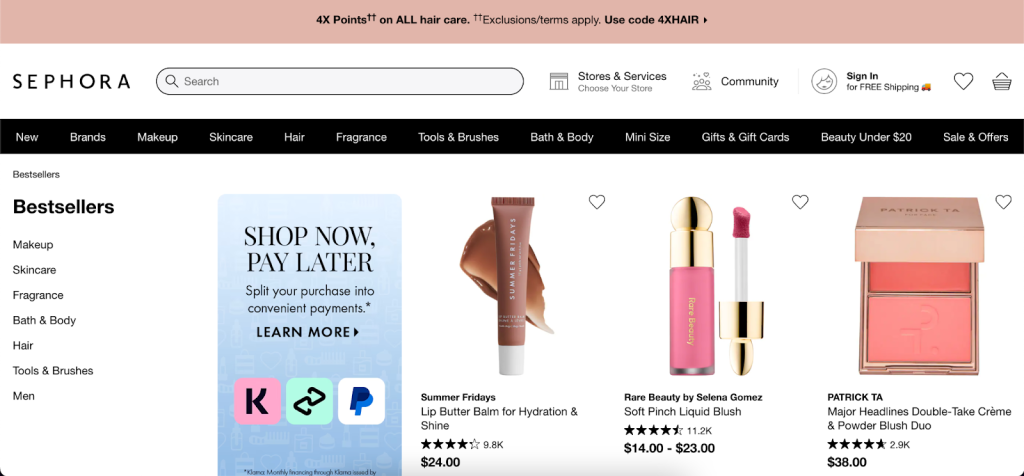
Sephora’s personalized bestseller lists showcase the most popular beauty products. This helps new customers and returning ones to find high-quality products widely trusted by other shoppers, increasing the chances of them buying something.
Step 5: Use The Right Tools
A successful eCommerce personalization strategy hinges on the quality of the tools you use. Here are solutions to consider:
- Customer Relationship Management (CRM) Software: Use HubSpot to segment contacts, track customer interactions across platforms, and create personalized marketing campaigns.
- A/B Testing: Implement A/B testing to compare strategies and determine which performs best. Test various messages or visuals to discover what resonates most with your audience using VWO and Google Optimize.
- Push Notification Tools: Use OneSignal or CleverTap to inform high-value customers about sales or upcoming events on customers’ browsers or mobile phones.
- Recommendation Engines: Use Nosto to offer product recommendations, include pop-ups on the website, and generate personalized email campaigns.
- Customer Data Platforms (CDP): Use Segment and Tealium to collect and unify customer data from various touchpoints to create a single view of the customer.
- AI and Machine Learning Platforms: IBM Watson uses AI to personalize customer interactions across different channels, offering tailored recommendations and support.
Step 6: Continue To Optimize & Refine Your Personalization Strategy
Consumer buying patterns and trends in eCommerce change rapidly, which calls for continuous improvement in marketing and personalization strategies.
Build a customer feedback system using surveys, feedback forms on your website, and customer support interactions. Use this feedback to understand customer preferences and pain points.
Subscribe to eCommerce blogs, forums, and newsletters to stay informed about the latest trends and technologies. You can also participate in industry events to learn from experts and network with other professionals.
Set up these tools to track customer behavior, including page views, clicks, time spent on the site, and purchase history. Regularly review this data to identify trends and patterns.
Perform A/B tests for different personalization strategies. Look at click-through rates, conversion rates, and average order value to see which tactics had the most significant impact on customer engagement and sales
Document the changes you make and their impact in a centralized document along with dates so you can track progress and make data-driven decisions.
3 Barriers To Successful eCommerce Personalisation
Despite the many benefits of eCommerce personalization, most businesses find it difficult to implement. Here are the main challenges:
Overwhelming Data
Companies that have been collecting customer data for several years mostly find themselves with too much data for former customers and too little for new customers. This can make it hard to identify which patterns are the most relevant.
Use advanced analytics tools like Google Analytics or Tableau to segment data and focus on the most recent and relevant data for making informed decisions.
Outdated Systems
Many companies still rely on outdated systems for data collection and analysis. This nullifies their ability to interpret and use the data correctly.
Upgrade to modern, cloud-based data management platforms like Snowflake or BigQuery, which offer better scalability, speed, and integration capabilities for efficient data handling and analysis.
Ignoring Niche Trends
A niche trend appears insignificant and trivial. This is where individual needs are ignored, which are at the heart of personalizing the shopping experience. Striking the correct balance between common and niche trends is genuinely required.
Use specialized market research tools like Statista or niche trend analysis platforms to identify and include these trends in your personalization strategy.
Conclusion
Before you start implementing these eCommerce personalization strategies, ask yourself how you can leverage the latest technologies to better understand and meet the unique needs of your customers. Start small with personalization efforts and gradually expand as you gather more data and insights.
To reap the benefits of these personalization strategies, your website should be built for maximum performance and scalability to accommodate more visitors and conversions. Ultahost eCommerce hosting solutions let you scale your eCommerce website and keep it functioning optimally. Contact us today.





